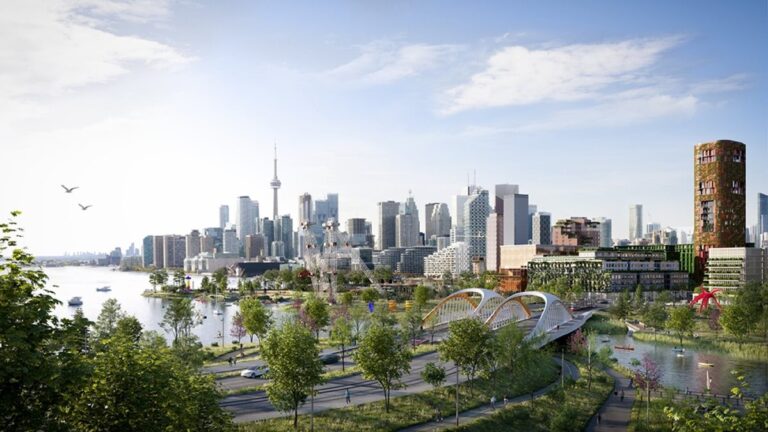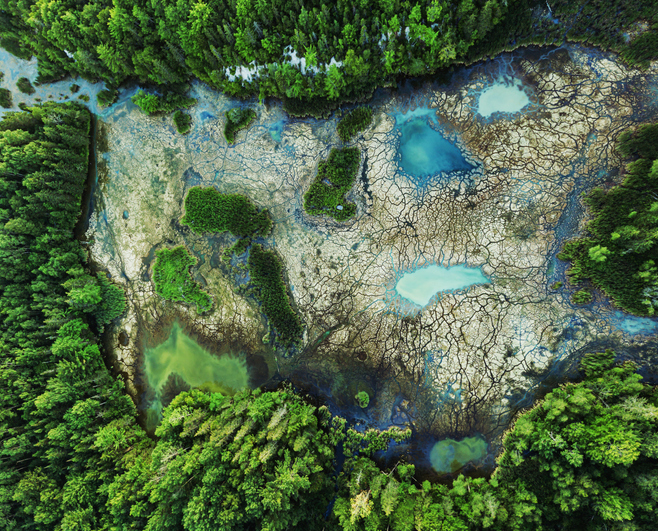Saturday, July 5, 2025
Located on the southern shore of Lake Ontario, the Grimsby Wetlands cover a 29-acre site that was once the Biggar Sewage Lagoons. Through the efforts of the Hamilton Naturalists’ Club (HNC) and collaboration with local authorities, this area has been revitalized into a thriving ecological asset.
This remarkable transformation of the former sewage treatment site was honoured with a 2023 Brownie Award in the REINVEST category. The Brownie Awards, presented in partnership by the Canadian Brownfields Network (CBN) and Actual Media Inc., recognize outstanding projects and project leaders working in the brownfields space. This award in particular recognized excellence in financing, risk management, and partnerships, celebrating the project’s success in turning a neglected brownfield into a vibrant natural habitat.
The transformation of this site began in 2002 when the HNC advocated for preserving the lagoons. Bruce Mackenzie, the HNC’s project manager, highlighted the site’s importance, “The 30-acre parcel of the Grimsby Wetlands has added tremendously to the biodiversity here, especially with wetland nesting birds not found otherwise in the area.”

The lands where the Grimsby Wetlands are found are part of a larger fruit farm that operated from 1798 to 1960, started by John Biggar, a United Empire Loyalist, and farmed for 162 years. (Photo courtesy of the Hamilton Naturalists’ Club.)
Persistent negotiations were crucial to the project’s success, according to Mackenzie, who helped to convince the landowners that the original investment in building the lagoons 60 years ago could easily be preserved and transformed into a special environmental area and a public asset.
The vision and the multi-phase transformation process
The revitalization of the Grimsby Wetlands was a multi-phase endeavour. In 2014, the planning of Grimsby’s new waterfront trail began, with the HNC proposing the incorporation of the wetlands into the trail’s route.
This collaboration led to the development of a new trail and an observation tower, completed in 2016, providing public access and panoramic views of the revitalized wetlands. These additions have enhanced both educational and recreational opportunities for visitors.
Following the trail’s completion, further habitat improvements included the introduction of bird nesting structures and nature interpretive signage in 2017, supporting local wildlife and educating visitors about the area’s ecological significance.
This was complemented by a major Phragmites removal project undertaken in 2018. Phragmites, an invasive grass species, had previously threatened the wetlands’ ecological balance. By removing these invasive plants and sowing native species in their place, the HNC restored natural habitat conditions and promoted biodiversity.
The transformation process involved meticulous planning and community involvement at each stage. The collaboration with local authorities and other stakeholders ensured that the project met the needs of both the environment and the community.
“The area is open freely to the public and visitors come from Grimsby of course and very importantly from across southern Ontario to see the wetlands and their inhabitants and what can be done with a former sewage lagoon property,” Mackenzie shared.
The vibrant revival and lasting impact
The Grimsby Wetlands have undergone a remarkable transformation from a former sewage treatment site to a thriving natural haven. Today, the area features six distinct wetlands, each supporting a diverse range of wildlife and plant species.
This revitalization has significantly enhanced local biodiversity, turning what was once a neglected brownfield into a vibrant ecological resource.

A Painted Turtle in the Grimsby Wetlands, showcases the rich biodiversity supported by this revitalized natural habitat. (Photo courtesy of the Hamilton Naturalists’ Club.)
The project’s success has provided substantial recreational benefits to the community. Visitors can now enjoy a variety of outdoor activities, such as bird-watching and walking along trails, which foster a deeper connection to nature, while greatly improving the quality of life for residents and highlighting the value of integrating natural areas into urban settings.
The HNC has integrated this rich history into their interpretive programs, linking the past use of the land with its current role as a vital ecological and recreational resource.

The success of the Grimsby Wetlands project serves as a powerful example of effective environmental stewardship. The Hamilton Naturalists’ Club, in collaboration with the Niagara Peninsula Conservation Authority and the Town of Grimsby, has demonstrated how concerted efforts and innovative approaches can transform former industrial sites into valuable natural assets. (Photo courtesy of the Hamilton Naturalists’ Club.)
The project not only contributes to the ecological health of the region but also serves as a model for similar initiatives across Canada. For more information on the Grimsby Wetlands, visit Hamilton Naturalists’ Club Grimsby Wetlands.
To learn more about the Brownie Awards and how to nominate projects for 2024, visit Brownie Awards.
Note: Those who provide nominations by August 30 will be entered into a prize draw!

Reya Shreya Rai is an editorial intern for Environment Journal. She is a writer and a student of Contemporary Journalism at Centennial College.
Featured image credit: Getty Images











